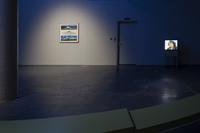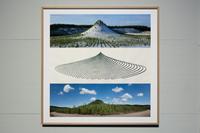Chapter 5IVE
Tree Mountain – A Living Time Capsule – 11.000 Trees, 11.000 People, 400 Years (1982, 1992–96)
Tree Mountain – A Living Time Capsule – 11.000 Trees, 11.000 People, 400 Years, 1982, 1992–96
Mixed techniques
©Agnes Denes, Courtesy Leslie Tonkonow Artworks + Projects
Landscapes are slow. Our economy dictates a logic of eternal growth at a speed that does not correspond to the ecological clock, not even when it is aided by advanced technology. Tree Mountain – A Living Time Capsule – 11,000 Trees, 11,000 People, 400 Years by conceptual and ecological artist Agnes Denes reminds us of this slowness of the landscape. It makes us aware that this forest already existed many years before us and will exist many years after us. Denes is well-known for her iconic work Wheatfield—A Confrontation (1982), for which she created a two-acre wheatfield right in the middle of Manhattan.
Tree Mountain – A Living Time Capsule – 11,000 Trees, 11,000 People, 400 Years is an artwork erected as a forest, consisting of 10,000 silver firs, planted in an elliptical shape by 10,000 people on a former gravel pit in Finland. The forest in the first place restores the ecological balance in an area that has been ruined by industry, but additionally also functions as a time capsule comparable to for example Stonehenge in England. The mathematical formation – a combination of the golden ratio and the Fibonacci sequence – in which the forest has been planted encourages future civilisations or other forms of life to reflect on its cultural origins, comparable to the recent discovery by scientists that large parts of the southern Amazon region were also planted by humans.
"I want to change humanity a bit. And I think I have", Denes says in the interview that is shown in the installation. A passionate statement that, despite being inspirational, also raises the question to what extent we really are able to bring about change. The forest still exists, but the strength of the artwork lies especially in the utopian imagination it invokes. The artwork is intended to survive our current era and to take our concepts and ideas to an unknown time in the future. A project that does not embody an individual artistic desire, but the common good for future generations.

